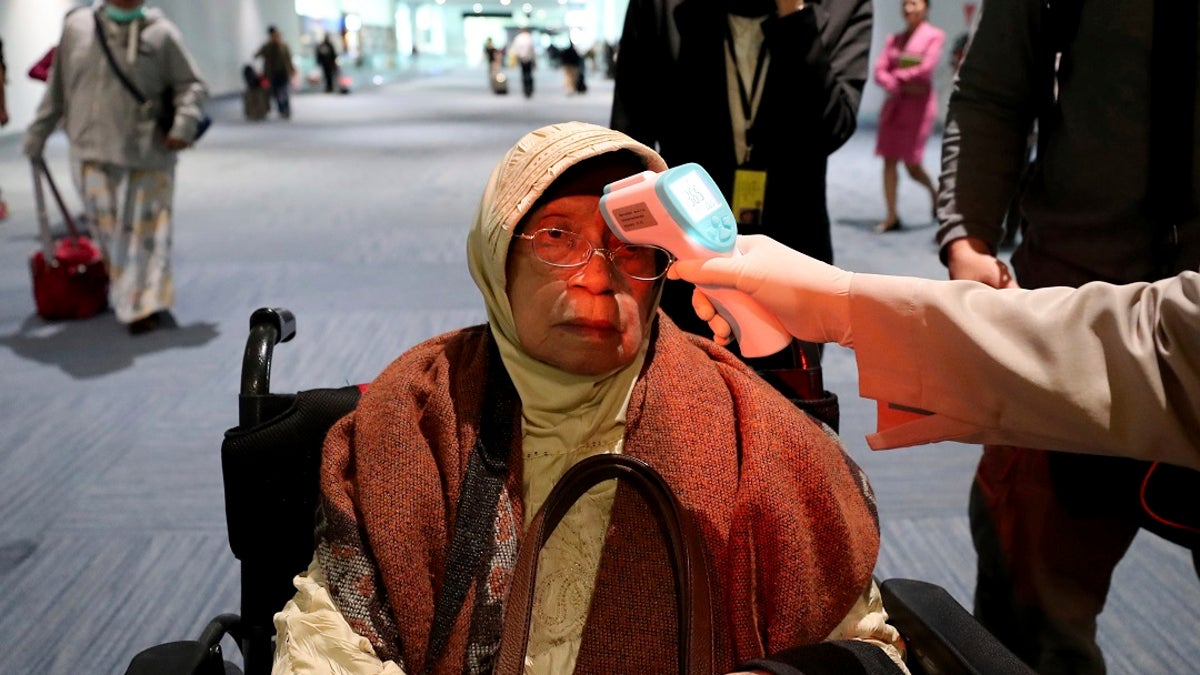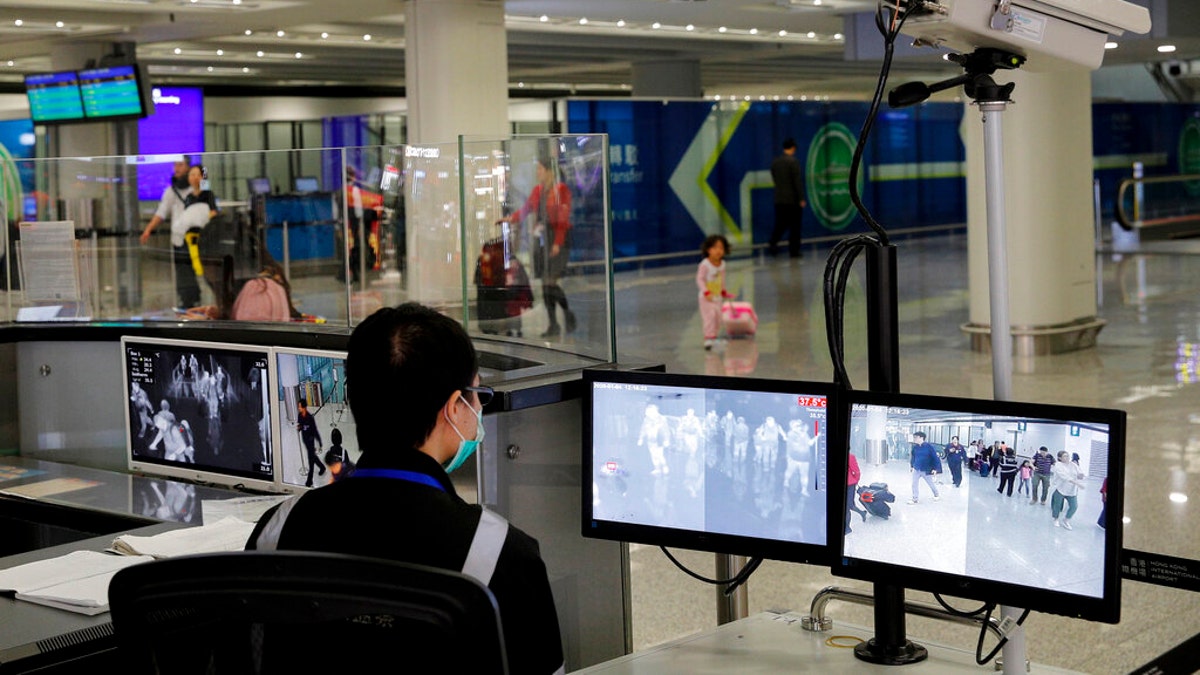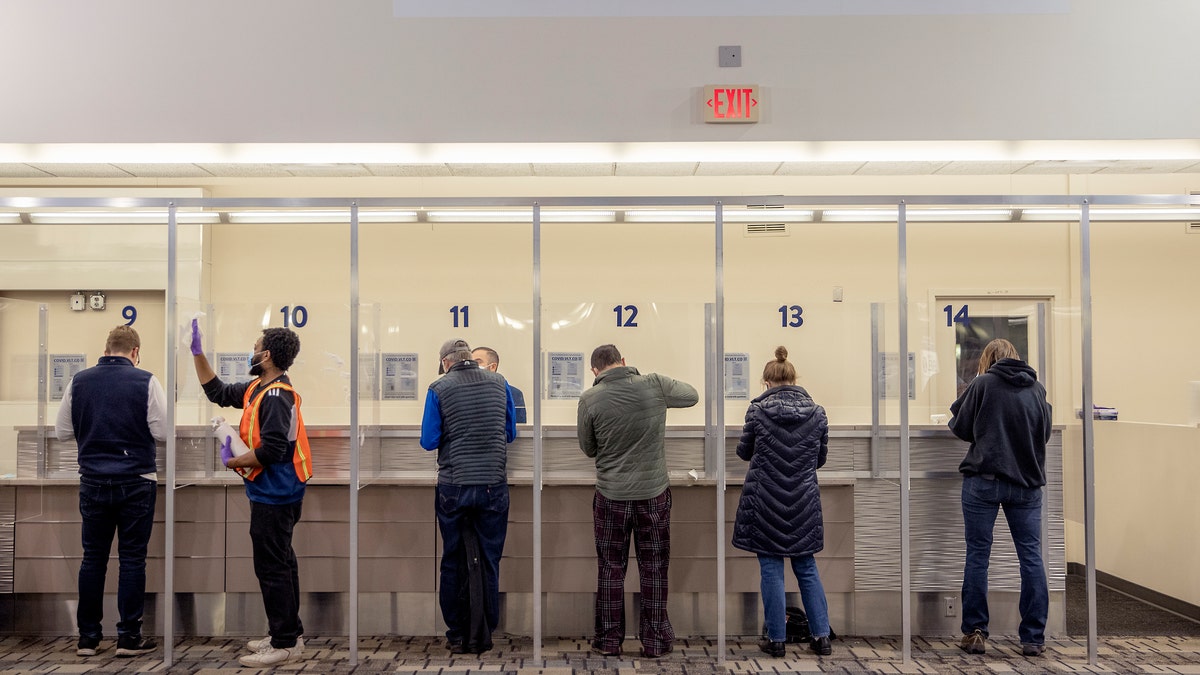Fox News Flash top headlines for November 18
Fox News Flash top headlines are here. Check out what's clicking on Foxnews.com.
Efforts to screen travelers arriving in the U.S. for COVID-19 were more trouble than they were worth, according to a new Centers for Disease Control and Prevention report.
The CDC, with help from the Department of Homeland Security, screened passengers arriving at airports from some hard-hit countries between January and September. Officials screened more than 766,000 passengers, but ultimately only 35 travelers were tested for the coronavirus and just nine tested positive.
That’s just one positive case per 85,000 travelers screened. And officials were missing contact information for “a substantial proportion” of the screened travelers.
The new report, published in the CDC’s Morbidity and Mortality Weekly Report, found that the program was “resource-intensive” despite providing a low case detection rate. The effort was ultimately “ineffective” because people infected with COVID-19 may not show symptoms even as they pass the virus to others.

Efforts to screen travelers arriving in the U.S. for COVID-19 were more trouble than they were worth, according to a new Centers for Disease Control and Prevention report. (AP Photo/Tatan Syuflana)
DELTA BLOCKS MIDDLE SEATS AS COVID-19 PRECAUTION THROUGH MARCH 2021
Screenings included observation for signs of illness, a no-contact temperature check and a questionnaire about symptoms and exposure. Travelers who were ill or disclosed exposure to someone else with the virus were then referred to a medical officer for more assessment.
Even while the airport screenings were in place, there were questions about their value. Over the summer, TSA head David Pekoske said that temperature checks “are not a guarantee” that passengers do or do not have COVID-19, Fox News previously reported.
And while the screenings were in place, they didn’t stop the virus from spreading. The coronavirus has killed more than 250,000 Americans and infected another 11 million, according to Johns Hopkins University data. The average number of new daily cases in the U.S. recently hit a record high.

Officials screened more than 766,000 passengers, but ultimately only 35 travelers were tested for the coronavirus and just nine tested positive. (AP Photo/Andy Wong, File)
CLICK HERE TO GET THE FOX NEWS APP
The CDC ended the screenings in September, opting to instead focus on “more effective” virus mitigation efforts that focus on individual passengers, the agency said at the time.
“By refocusing out mitigation efforts on individual passenger risk throughout the air travel journey, the [U.S. government] can most effectively protect the health of the American public,” officials said in a press release.
The new report suggested a collection of passenger contact information before arrival would help for timely contact tracing. Testing and quarantining might also reduce the risk of spreading the coronavirus between geographic areas.

The air travel industry has pivoted toward more passenger testing on top of other precautions like requiring masks. (Elizabeth Flores/Star Tribune via AP)
CLICK HERE TO SIGN UP FOR OUR LIFESTYLE NEWSLETTER
The air travel industry has pivoted toward more passenger testing on top of other precautions like requiring masks. Airlines flying to Hawaii began offering rapid COVID-19 testing for passengers last month. United Airlines just added free coronavirus testing on flights between Newark, New Jersey and London. Los Angeles International Airport opened testing locations with a 24-hour turnaround this week.
Once passengers are on board, flying on a plane is reportedly relatively safe, due to airline mask requirements and planes’ air filtration systems. A recent Department of Defense study found COVID-19 exposure is “extremely unlikely” on a flight.
Still, there are risks with traveling and the pandemic has chilled travel around the U.S. As of last week, U.S. airline passenger volumes were just 63% of what they were a year ago, according to Airlines for America, an industry group.

